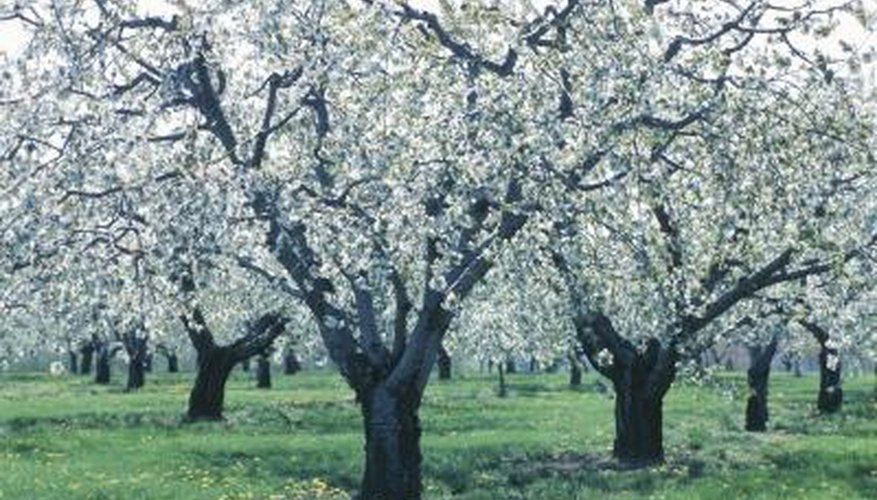Young apple trees are weaker than mature, fully adult trees that are already established. Because they are still growing and establishing roots and getting used to their surroundings, young apple trees are more susceptible to pests and diseases than mature trees are. Brown spots on young apple tree leaves are an indication that pests or diseases are damaging your trees, and they must be treated.
Apple tree care
Apple trees grow in a wide range of conditions and will tolerate many soil types. Do not plant apple trees in heavy clay soils or areas with poor drainage, though. Apple trees also need cool air circulation; this is important in preventing the kinds of diseases that create brown spots on leaves and other tree damage. Do not plant apple trees in low-lying areas where cold air may settle, as this will lead to frost damage. Plant trees on a hill or slope where they will receive good air circulation. The trees require full sunlight, with little to no shade, to grow properly. Do not plant apple trees near a source of water, such as a lake or stream, or a forested area.
- Apple trees grow in a wide range of conditions and will tolerate many soil types.
- Do not plant apple trees in low-lying areas where cold air may settle, as this will lead to frost damage.
Leaf s
Frogeye leaf spot is often the precursor to even more serious problems: black rot and canker. The fruit of young apple trees affected by frogeye leaf spot may blacken and rot on the tree. Frogeye leaf spot is caused by Botryosphaeria obtusa fungus. In its early stages, frogeye leaf spot appears as circular brown spots on apple tree leaves. The spots are less than 6 mm (1/4 inch) in diameter and are darker at the edges than at the centre. As the fungus spreads over the tree leaves, the leaves will yellow and drop. When symptoms of frogeye leaf spot are present on apple trees, immediately prune away all affected areas. Frogeye leaf spot is caused by poor air circulation, indicating the tree needs to be pruned and thinned out.
- Frogeye leaf spot is often the precursor to even more serious problems: black rot and canker.
- In its early stages, frogeye leaf spot appears as circular brown spots on apple tree leaves.
Canker
Canker appears on the bark and leaves of apple trees in the form of reddish-brown spots. Apple trees that have been damaged by cold weather are prone to canker, which will spread dark, black spots over branches. Affected branches will wither and die. As the problem spreads, it may kill the tree. You should prune away damaged and dead branches of apple trees, whether or not they are affected by canker, but when canker is present, these areas must be cut away.
- Canker appears on the bark and leaves of apple trees in the form of reddish-brown spots.
- You should prune away damaged and dead branches of apple trees, whether or not they are affected by canker, but when canker is present, these areas must be cut away.
Scab
Scab is a common problem for mature and young apple trees alike. It appears on apple tree leaves as brown spots with a feathery texture and sometimes a greenish tint. As the problem develops, the spots will look more like scabs. In severe cases, leaves will turn yellow and fall from the tree. The fruit of the tree may also be affected, and their growth will be distorted. Scab is tough to kill, as it will survive even through the winter on fallen apple tree leaves. Thoroughly rake and remove all leaves to prevent the return of scab, and use fungicides when it is present in spring and summer.
- Scab is a common problem for mature and young apple trees alike.
- Scab is tough to kill, as it will survive even through the winter on fallen apple tree leaves.
